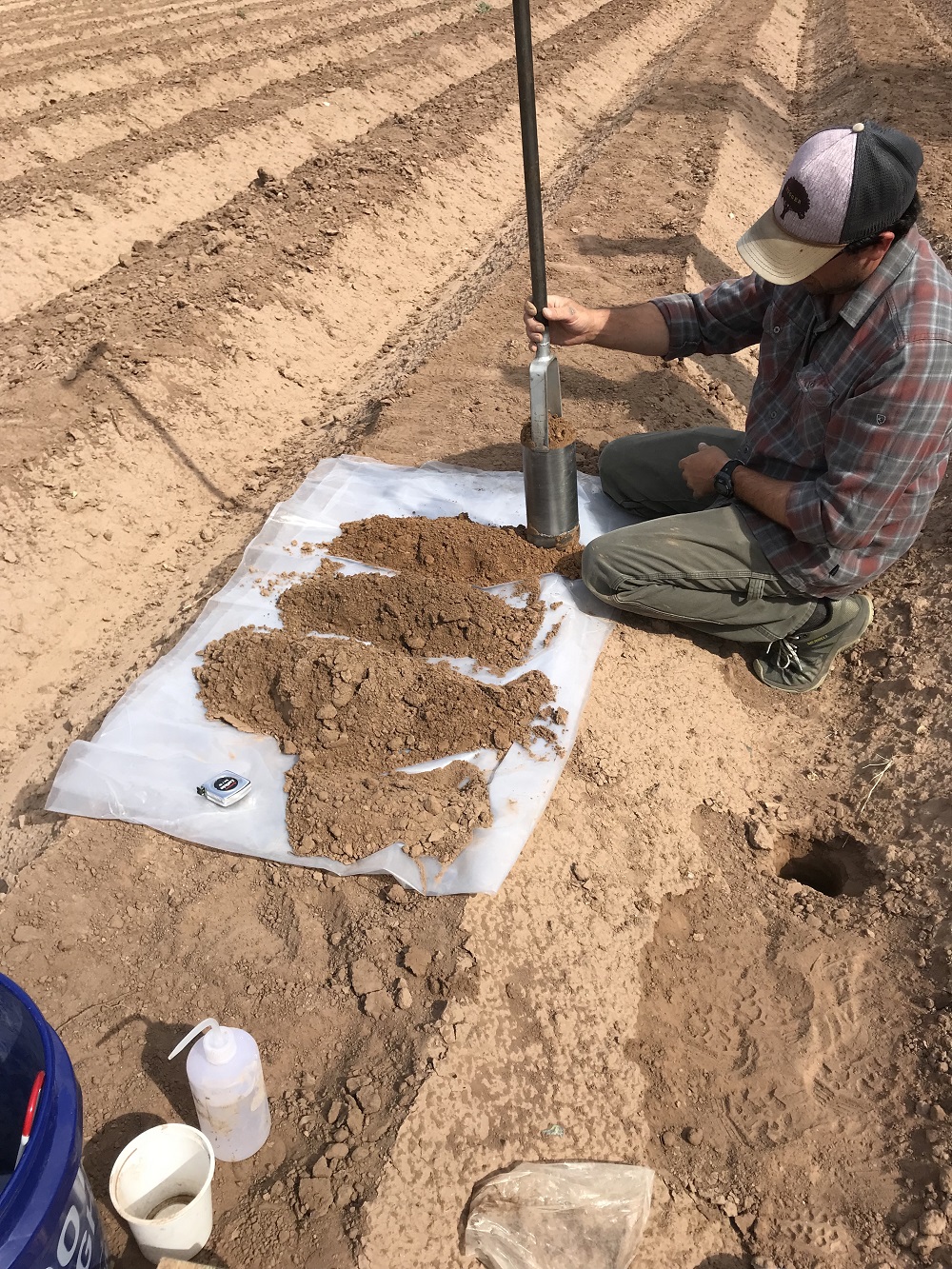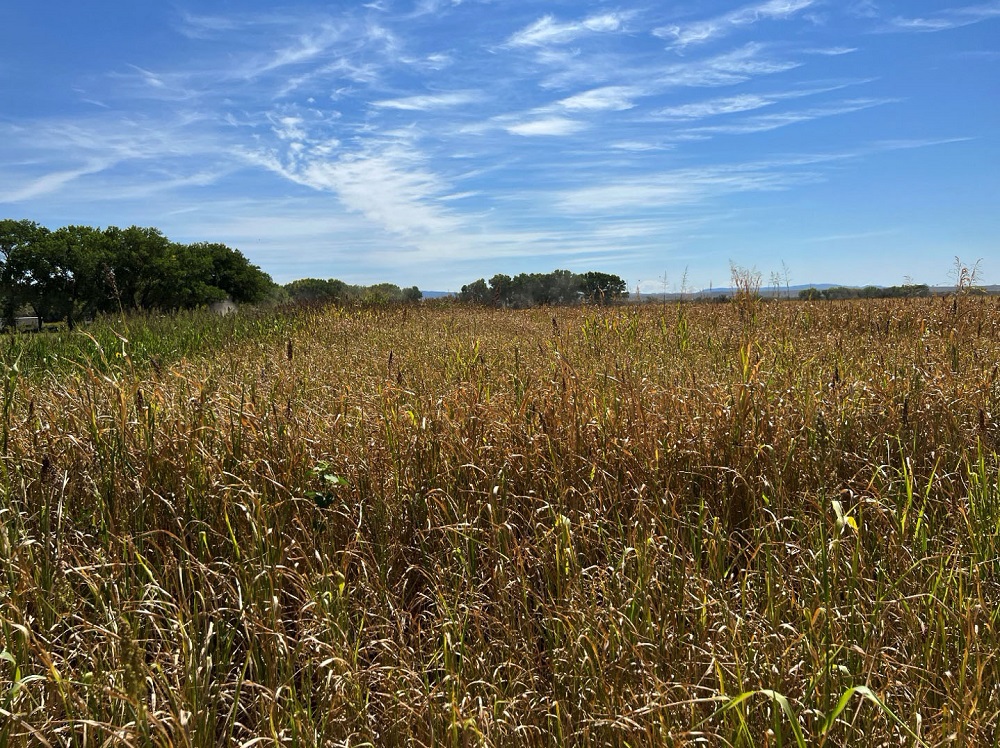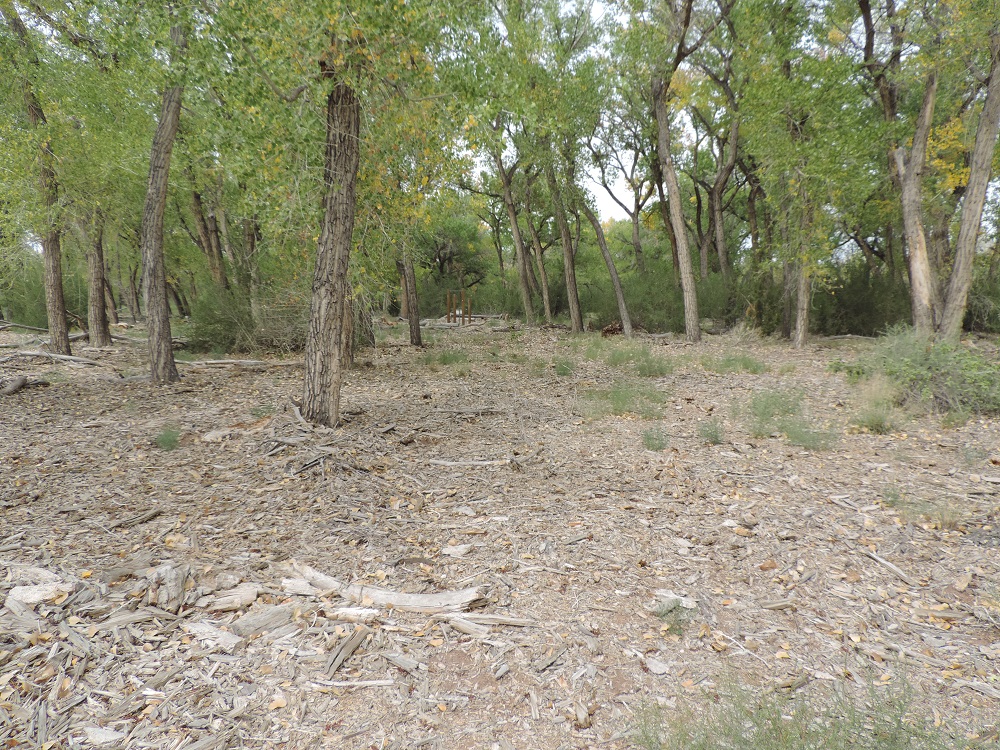FOR IMMEDIATE RELEASE:
Contact: Kristie Garcia
Director of Public Affairs, New Mexico Department of Agriculture
krgarcia@nmda.nmsu.edu
Office: 575-646-2804
Cell: 575-339-5011
Oct. 12, 2022
Healthy Soil Program awards $1.1 million in funding for 51 projects
Fiscal year 2023 awardees include 38 Individual Applicants, 13 Eligible Entities
LAS CRUCES – The New Mexico Department of Agriculture (NMDA) announced on Wednesday that $1.1 million in funding has been awarded to 51 projects through the state’s Healthy Soil Program for fiscal year 2023. Awardees include 38 individual applicants and 13 eligible entities.
Enacted by Gov. Michelle Lujan Grisham in 2019, the Healthy Soil Act aims to promote and support farming and ranching systems and other forms of land management that increase soil organic matter, aggregate stability, microbiology and water retention to improve the state’s soil health, yield and profitability. In the program’s pilot year – fiscal year 2020 – NMDA awarded funding to 26 on-the-ground projects in the amount of $178,000. NMDA awarded funding to 19 on-the-ground projects in the amount of $237,000 in fiscal year 2021 and 17 on-the-ground projects in the amount of $185,000 in fiscal year 2022.
“The projects funded by this program will greatly benefit New Mexico agriculture as a whole,” said New Mexico Agriculture Secretary Jeff Witte. “We have doubled the number of projects funded in the past, and it’s exciting to learn about all of the awardees’ innovative approaches to improve soil health.”
Individual applicants include farmers, ranchers and other land managers, as well as businesses and nonprofits engaged in farming, ranching or other forms of land management. Eligible entities are defined in the 2019 Healthy Soil Act as “local governmental [entities] with proven land management capacity to support healthy soil” and include pueblos, tribes, and nations; land grants; acequias; soil and water conservation districts (SWCDs); and New Mexico State University’s (NMSU) Cooperative Extension Service.

One of the Individual Applicants, Regeneration Farm and Toots’ Shady Grove Orchard, will implement an intra-city project, planting cover crops and creating pollinator habitat borders on three acres of an overworked plot made up of a fallow field and an orchard.
Dair Obenshain, farm manager of Regeneration Farm and Toots’ Shady Grove Orchard, hopes to regenerate healthy soil microbial and plant communities with funding from the Healthy Soil Program.
“When I heard about the Healthy Soil Program grant, I was amazed and thrilled,” said Obenshain. Here were people offering support for just what I was hoping to do for our family land! The lovely thing about the grant is that the program specifically supports the practices that are hard to find the wherewithal and the faith to do: the cover crops, pollinators and other practices that don’t immediately result in a cash return. Even if farmers are committed to rebuilding their soil, it’s hard to commit cash and valuable field space to such a long-term investment.
“This year, everything that we plant with Healthy Soil Program support will be returned to the soil. Rebuilding the soil can be a slow process, but hopefully by jumpstarting things with compost and carefully tending the process – keeping it all covered and moist – we will be on our way to converting these fallow, barren fields into oases, with, well, something for everyone: a healthy community below the soil for the roots, microbes and earthworms, and a healthy community above the soil line of plants, pollinators, birds, lizards, toads, snakes, livestock and people! With time, I hope that Regeneration Farm will always have areas that are devoted to rebuilding the soil, rotating with areas that provide sustenance for all of us.”

Included in the Eligible Entities projects are the Pueblo of Santa Ana and Middle Rio Grande Conservancy District. The Pueblo of Santa Ana plans to treat 9-and-a-half acres of degraded forest by composting onsite with woods chips and reseeding with native species. Nathan Schroeder, Pueblo of Santa Ana Restoration Division Manager, said the project is a proof of concept.
“We are evaluating composting mastication chips at the treatment site and using that created compost in the revegetation efforts of the Pueblo’s bosque,” said Schroeder. “My colleagues and I are interested in the final result. A treatment prescription of this type could change the way we treat dead and downed fuels in the future.”
The Middle Rio Grande Conservancy District will work with the New Mexico Department of Game and Fish to develop short and long-term soil health strategies that help farmers and irrigators manage salt-affected soils in the Middle Rio Grande.
Gabriella Coughlin, an agronomist with the Middle Rio Grande Conservancy District, said the project would achieve the following: refine irrigation water management practices through soil-moisture monitoring, analyze soil organic matter interactions of different cover crop residues and amendments, evaluate reduced-till and cover crop termination techniques and assess performance of salt and drought-tolerant crop species and rotations.
“Through this project, we also look forward to connecting how past indigenous and Hispanic communities lived on and around these salt-affected soil landscapes and what we might glean from their use and management of these lands,” said Coughlin. “Salt played an important role in New Mexico’s history as it helped support several trade routes and missions during the early 17th and 18th centuries.

“During our landowner workshops, we will learn about the rich salt history of the area from regional archaeologists and historians. Managing for salts during our current drought conditions is a difficult job. By integrating a historical perspective on soil management, we hope to instill a more profound appreciation for what it takes to grow and sustain life in these sometimes hostile, arid environments.”
Secretary Witte said drought affects all agriculturalists in the state, and he encourages more people to apply for Healthy Soil Program funding when future grant application periods open.
“Healthy soil is more resilient to drought, and I hope more farmers, ranchers, dairy producers and other land managers are inspired to apply for this funding in the future,” he said.
Grant funding from the Healthy Soil Program may be used for on-the-ground projects in New Mexico that focus on one or more of five basic soil health principles: keeping the soil covered; minimizing soil disturbance on cropland; maximizing biodiversity; maintaining a living root; and integrating animals into land management.
For more information and to subscribe to program updates, visit the NMDA Healthy Soil Program web page.
###
Find us at:
Please bookmark the new NMDA website: NMDeptAg.nmsu.edu
Facebook, Twitter and Instagram: @NMDeptAg
YouTube: NMDeptAg
LinkedIn: New Mexico Department of Agriculture
